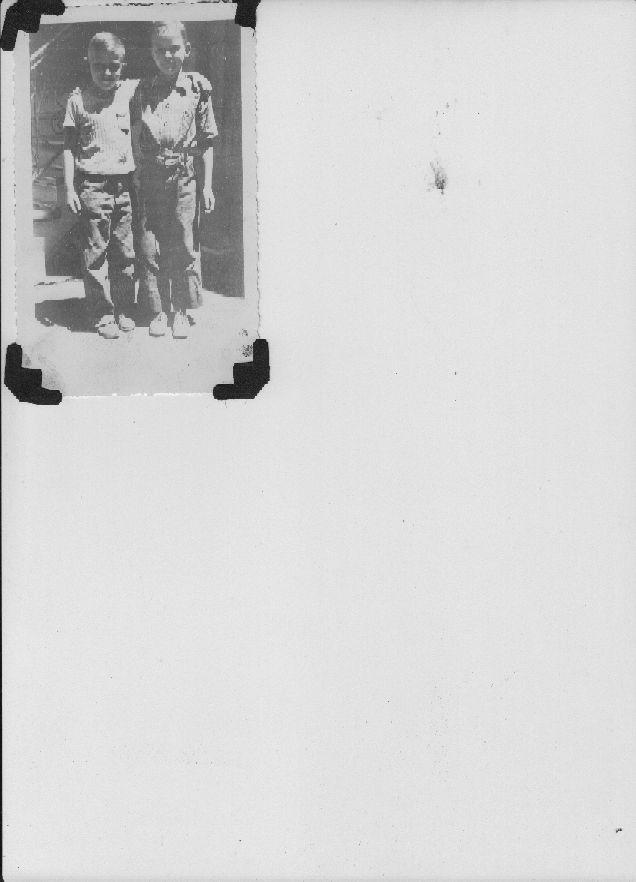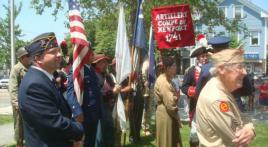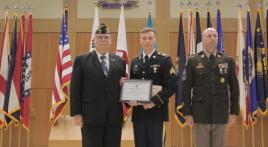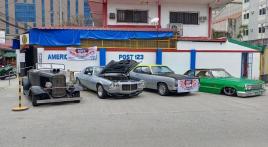The alley between north Racine and Clark streets, was our gateway to everywhere. I lived on Racine and a boyhood friend of mine lived across the alley in a third floor apartment facing Clark. I remember looking out his front window, down on the street cars, across Waveland Avenue to Wrigley Field. We didn't spend much time at his apartment because his father worked nights and we were too noisy. His mother was a very attractive lady and usually wore a long silk robe like a movie star of the 40's. Silk was extremely scarce as it was previously imported from Japan and now we were at war. She would shoo us out of the apartment before we got too rowdy and woke his father. From there we would go out on the back porch, down the zigzag stairs and through the gate to the alley.
From the alley side of the apartments it all looked the same, gray painted porch landings at each of the floors, connected by the zigzag stairs that led down to the tall fences separating each backyard and ending with a garage at the alley. The block between Racine and Clark streets were wedge shaped, with the alley running north toward the point and then turning out to Racine.
The alley was not only a play area, but a path of commerce; peddlers selling fresh fruits and vegetables, housewares and knife and scissor sharpeners passed through the alley daily, pushing hand carts. On Cubs game days, musicians, organ grinders and scam artists joined the parade of interlopers. There were delivery trucks at that time, but most commerce was done from hand carts because there wasn't any rubber for tires nor gasoline trucks. Some times trucks would deliver in the neighborhood and I could hear them coming a long way off, because they were running on wooden tires in place of the rubber ones and gave a rumbling, howling sound as they rolled on the pavement.
President Roosevelt said we needed to save aluminum to make more airplanes and cooking fat to make more explosives. Periodically there was a drive to collect aluminum pots, pans, and “tinfoil”, which was actually aluminum foil. The aluminum was piled up at the end of the alley awaiting collection. We saw some older boys struggling to roll a huge tinfoil ball down the alley. The ball was over waist high in diameter made of the foil from gum and cigarette wrappers. With similar aspirations, we filled my mother's sink and bath tub with hundreds of gum and cigarette wrappers trying to soak the foil off the paper leaving most of the papers plugging the drain. Though causing some local problems, it was a noble effort in support of the war.
My mother like most others, kept a soup can near the stove to save the bacon grease and other fat left over from cooking. When the can was full she would save it in the refrigerator along with other cans of solidified fat, until collection day. Then the cans would be placed on the back porch until a man pushing a hand cart came up the alley to collect and take them to the butcher shop. There they would be combined and frozen into cubes and delivered to the explosives plant. A pound of fat was said to produce a pound of explosive. That too made us feel good about supporting the war effort.
The local block civil defense used to hold practice air raids and deposit cardboard, simulated bombs around the neighborhood. Those cardboard bombs were prize toys, but the big kids always beat us to them or would take them away if we found them first. I remember one peddler coming to the back door selling sand to put out the incendiary bombs the Japanese were going to drop on us. My friend was at our house and he promptly ran across the alley to alert his family to the potential attack. I don't believe either of our mothers bought any sand and we still survived.
Wrigley Field could be seen from the vacant lot near Waveland. Facing Clark, it went through to the alley and was the meeting point for most of us kids. From there we would play hide and seek, tag and baseball. Chicago had a unique league of sixteen-inch softball which we sometimes tried to play, but our hands were too small, the ball too big and too many windows for a regular baseball. During Cubs games in the afternoon, you could hear the crowd at Wrigley Field singing. A then popular song, “Deep In The Heart of Texas”, was was accompanied with the crowd clapping and stomping their feet four times after the refrain, “The stars at night are big and bright,” thump, thump, thump, sending a thundering echo throughout the neighborhood.
Then in 1945 the war was over and my parents, like many others, decided it was time to explore new dreams and move out of Chicago. We moved to a farm in Three Rivers, Michigan, but as I walk the Lakeview neighborhood after a Cubs game, fond boyhood memories of growing up in Chicago remain. I see it not as it is, but as it was with all the sights and sounds of the WWII era.





